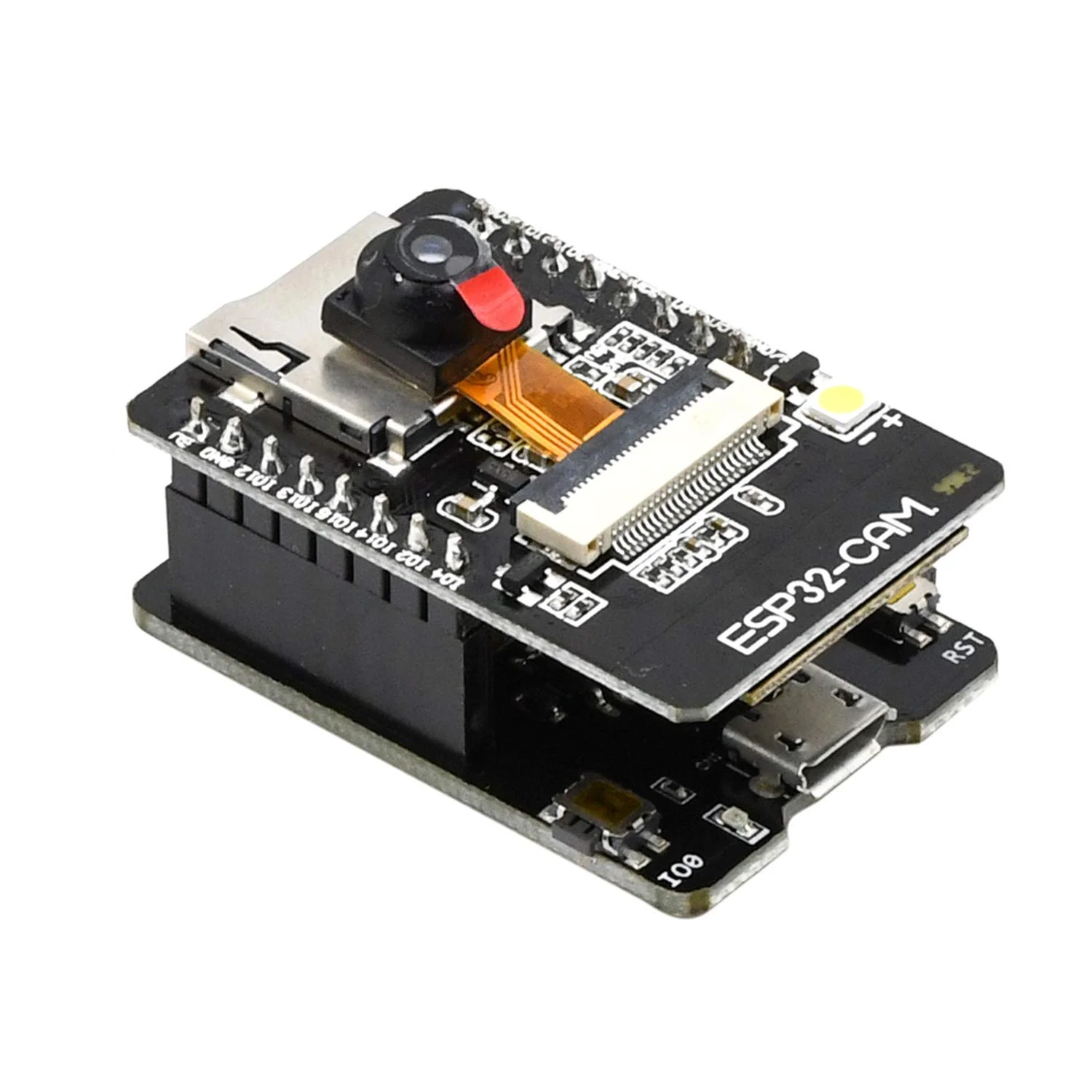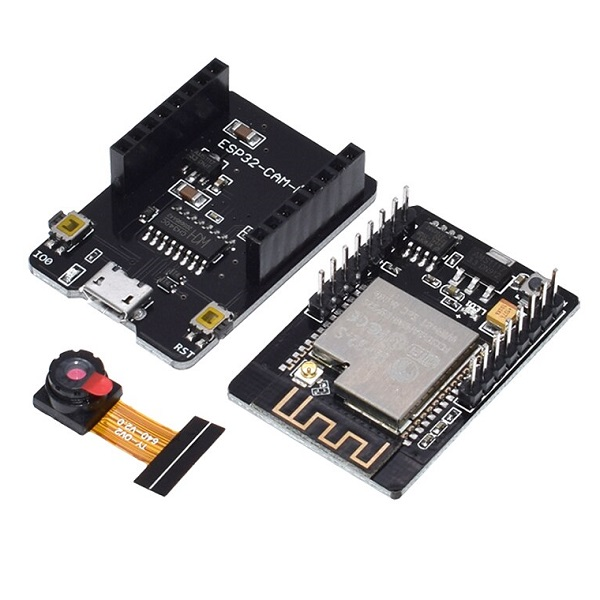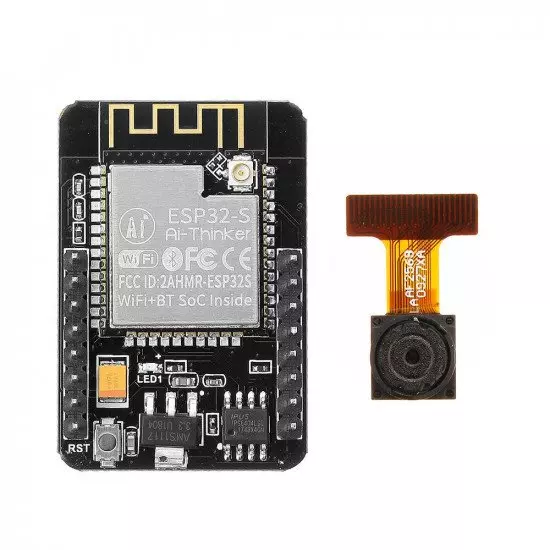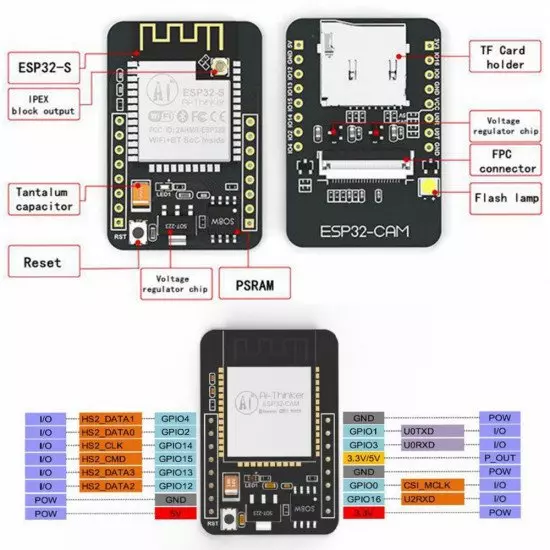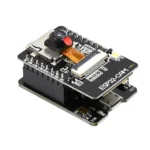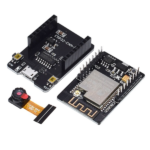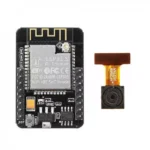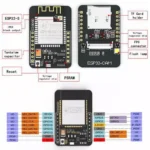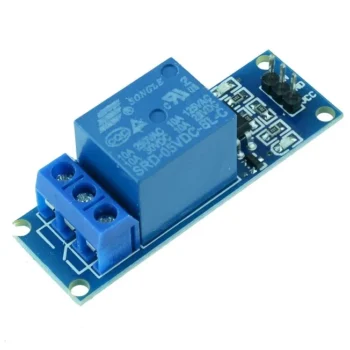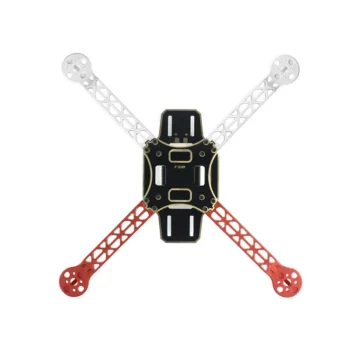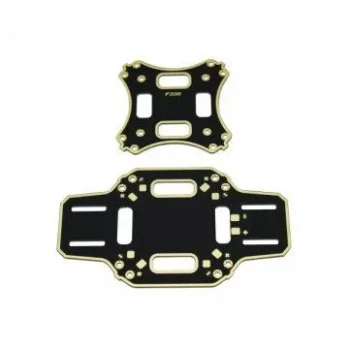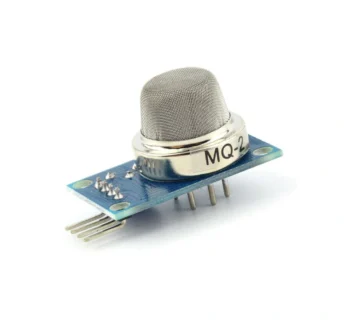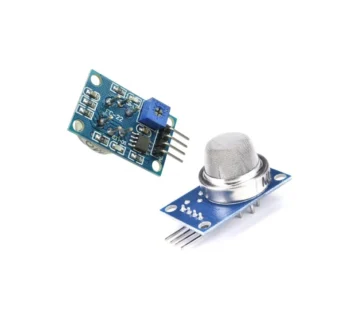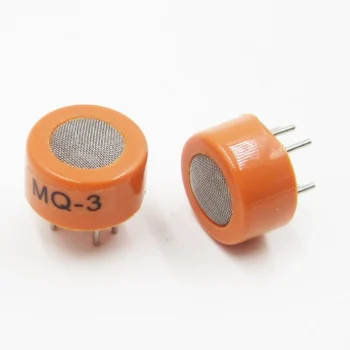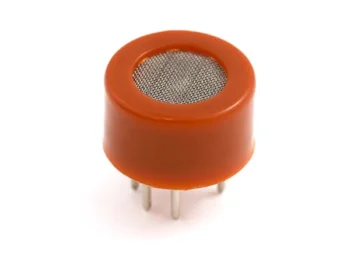ESP32-CAM-MB WIFI ESP32 CAM Bluetooth Development Board with OV2640 Camera MICRO USB to Serial Port

The ESP32-CAM is an ESP-WROOM-32 development board from AI Thinker, paired with a 2MP OV2640 color camera. The ESP32-CAM module also features an SD card reader that can be used to record images when an event is detected (e.g., presence or motion detector).
- Livraison & Retour
Livraison
Livraison en boutique GRATUIT
1 à 3 jours ouvrables
À domicile ou en point relais à partir de 400DA
Sur toutes vos commandes en livraison à domicile ou en point relais
Retours
Retour
Nous accepterons les échanges et les retours de vêtements non portés et non lavés dans les 30 jours suivant la date d’achat (14 jours pendant la période des soldes).
Retours en boutique GRATUIT
Votre retour sera généralement traité dans un délai d’une semaine à une semaine et demie. Nous vous enverrons un e-mail de notification de retour pour vous informer une fois le retour effectué. Veuillez prévoir 1 à 3 jours ouvrables pour que les remboursements soient reçus selon le mode de paiement d’origine une fois le retour traité.
- Poser une question
3.600,00 DA
The ESP32 CAM is a development board based on the dual-core ESP32 dual-mode WiFi + Bluetooth microcontroller.
This board is equipped with:
-ESP32 chip
-OV2640 Camera: This is a 2MP camera with a resolution of 1600×1200. It can provide full, downsampled, scaled, or windowed 8-bit/10-bit images in a wide range of formats.
-MicroSD card support: The board supports SD cards up to 4GB. It is used to store images or files.
The ESP32-CAM contains the following pins:
-Two I2C interfaces: Used for connecting the chip to other peripherals.
-Two I2S interfaces: Used primarily to transmit or receive audio data. Two DACs: This is an analog-to-digital converter (converts voltage into bits that the chip can understand).
-Three UART interfaces: These are used for programming and communicating with the PC to download code. Two RX receive pins and one TX transmit pin.
-Reset: This is used to reset the chip.
-GND: This is connected to ground.
-Built-in flash: This is a very bright built-in LED that can function as a flash when taking photos.
-Two power pins: 3.3V and 5V.
Its applications:
-Take and send photos via email (you can use SMPT for this project).
-Build a surveillance camera.
-Facial recognition and detection.
-Industrial product counter.
-Industrial wireless surveillance.
-Smart devices.
-Smart agriculture.
-QR code scanner.
-Smart doorbell.
-Home automation.
-Drones.
ESP32 TECHNICAL SPECIFICATIONS
-Wi-Fi 802.11b/g/n/e/i + Bluetooth 4.2.
-Microprocessor: ESP32.
-Power supply range: 5V.
-Low-power 32-bit dual-core processor.
-Onboard 520 KB SRAM, external 4MB PSRAM.
-Supports interfaces such as UART/SPI/I2C/PWM/ADC/DAC.
-Supports OV2640 cameras with built-in flash.
-Supports images uploaded via Wi-Fi.
-Supports multiple sleep modes.
-Supports micro SD cards.
-Flash memory: 4MB.
-Supported video formats: JPEG.
-Built-in LWIP and FreeRTOS.
-Supports STA/AP/STA+AP operating modes.
-Supports Smart Config/AirKiss one-click distribution network.
-Supports local serial upgrade and remote firmware upgrade (FOTA).
-Board size: 40x27x12mm.
-Weight: 10g.
| Marque | Arduino |
|---|
Produits connexes
- ESP32-WROVER is a powerful, generic WiFi-BT-BLE MCU module that targets a wide variety of applications,ranging from low-power sensor networks to the most demanding tasks, such as voice encoding, music streamingand MP3 decoding. The ESP32-WROVER has two versions: The ESP32-WROVER IPEX Module uses an IPEX antenna while the ESP32-WROVER PCB module has a PCB antenna.
MODULE compatible Arduino to control 4 motors DC or 2 stepper motors and have 2 connections for servomotors. This shield uses pins D3 to D12 for operation (direction, speed, etc).
The module is based on two L293D drivers and can control up to 4 DC motors with an intensity of 0.6 A per output (1.2 A at peak).
A 5v relay is an automatic switch that is commonly used in an automatic control circuit and to control a high-current using a low-current signal. The input voltage of the relay signal ranges from 0 to 5V.
- Wheelbase: 330mm
- Material: Glass Fiber + Polyamide-Nylon
- Moter Mounting Hole Diameter: 3 mm
- Arm Size: 155×34 (LxW) mm
- Weight: 160 gm
The MQ2 analog gas sensor is used in gas leak detection equipment. This sensor is suitable for detecting LPG, butane, propane, methane, alcohol, hydrogen, and smoke. It has high sensitivity and a fast response time; the sensitivity can be adjusted using a potentiometer.
Arduino Nano has enough processing power to control many electronic components. It has several I/O pins, which allows to connect it to many components. , it is a compact and reduced version of Arduino uno maroc.
Arduino Nano has 14 digital inputs/types (6 of which can be used as PWM outputs), 8 analog inputs.
Transceiver module based on an NRF24L01 allowing a 2.4 GHz wireless connection. This module communicates with an Arduino or compatible microcontroller via the SPI bus.
The HW-201 IR infrared obstacle detection module can detect obstacles within a distance range of 2 cm to 30 cm, with a detection angle of 35 degrees.
It can operate with a supply voltage of 3.3 V to 5 V and has a maximum current consumption of 100 mA. The module outputs a digital signal, high when an obstacle is detected, low when no obstacle is detected.
The infrared LED has a wavelength of 940 nm and an operating frequency of 38 kHz. The module operates at temperatures between -25 °C and +55 °C.
The MQ3 analog gas sensor is suitable for detecting alcohol; this sensor can be used in a breathalyzer.
It has high sensitivity to alcohol and low sensitivity to gasoline.
The sensitivity can be adjusted using a potentiometer.
The Arduino UNO is the best board to get started with electronics and coding. If this is your first experience tinkering with the platform, the UNO is the most robust board you can start playing with. The UNO is the most used and documented board of the whole Arduino family.
The SHT3x sensor is the most accurate and precise sensor for measuring humidity and temperature parameters compared to other temperature sensors like LM35, Thermistor, DS18B20 & DHT11/DHT22. Thus SHT3x can be used for industrial applications because of the high accuracy and good sensitivity. Its Relative Humidity operating range is 0 – 100% and Temperature operating range is -40° to +125°C (-40° to +257°F).
